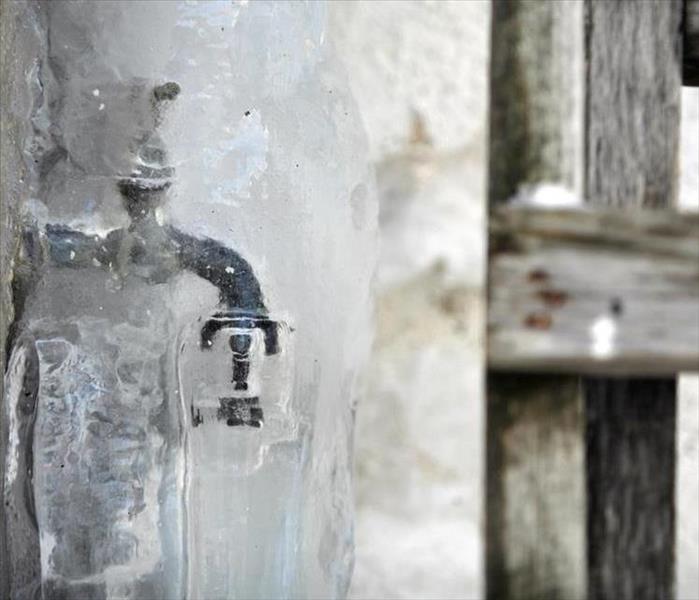How To Avoid Secondary Damage From Bursting Pipes
2/18/2022 (Permalink)
Bursting pipes can cause serious damage to the plumbing in your building, but direct damage to the plumbing isn't the only problem they can cause. Secondary damage can cause extensive problems throughout your building.
Avoiding Secondary Damage From Bursting Pipes
Water damage from the broken pipes is one of the first things you may notice after a pipe breaks. There are several steps you must take to mitigate the damage:
- Shut off the water supply
- Fix broken pipe
- Inspect the plumbing for additional broken or frozen pipes
- Remove water and dry out the building and contents
You can shut off the water by either turning your main shutoff valve to the off position or contacting your utility company in Pueblo, CO. You may be able to repair the section of broken pipe yourself, but if not, contact a plumber to make the repair before you turn the water back on. Contact a water remediation company to remove any standing water and help dry out your building and contents. The longer wet conditions persist in your building, the more likely you are to have secondary damage from the water.
Secondary Damage From Water
Water from a burst pipe can cause multiple types of secondary damage. It may cause wooden materials to warp or rot. It can cause metal to rust. The high humidity may promote mold growth. In winter, moisture in the air freezes when it contacts windows and exterior walls and doors. This can cause damage to joints and drywall. The best way to avoid these problems is to fix the source of the excess water and dry out the property as quickly as possible.
Avoiding Burst Pipes
The most effective way to avoid secondary damage from burst pipes is to avoid the primary damage. There are several steps you can take to reduce your risk:
1. Leave the Heat On
Many business owners turn the heat down during closing hours to save energy. When cold weather is in the forecast, don't turn the heat down. Keeping your building warmer reduces the risk of a pipe freezing.
2. Increase Circulation
Pipes are often located in areas where warm air from your heating system may not reach. Open doors and cabinets to make it easier for warm air to reach your pipes.
3. Insulate Your Building
Insulation in the walls of your building and around your pipes can help prevent freezing. Pay particular attention to pipes that are outdoors or near exterior walls.
4. Let the Faucet Drip
Opening faucets enough to allow a drip keeps water moving in your pipes, which lowers the risk of freezing. If your building is going to be unoccupied during cold weather, you may want to shut off the water and drain the pipes.
5. Fix Holes
Check the walls of your building for cracks and holes and repair any that you find. This will help keep cold air out of your building.
Primary damage from bursting pipes can be a major headache for property owners. However, secondary damage can sometimes be an even bigger problem. Taking steps to mitigate this damage can save you a significant amount of time and money.





 24/7 Emergency Service
24/7 Emergency Service
